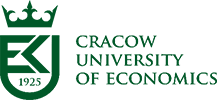CZECH REPUBLIC – Migration and demographic patterns in Central-Eastern Europe
This report has been prepared as a part of the Horizon 2020 FUME project – Future Migration Scenarios for Europe (870649) and its deliverable “D.6.3. Report on migration and demographic patterns in the EU CEE countries and potential source countries”. It aims to analyse the migration profile of Czechia and to assess the country’s migration potential in order to provide material for the fine-tuning of the FUME migration projection model. Some of the variables the report takes into account are gender, age, country of origin and destination countries. The report is a first step in the analytical exercise which aims to determine migration movement potential both from and to the Czech Republic.
For Czech Republic, analogously to other Visegrad Group states, international migration is a phenomenon that over the last few years became substantially important politically, demographically and economically. The development of the migration policy has been taking place in the country since the 1990s. While the Czech economy has been experiencing increasing demand for foreign labour, the mainstream public narrative concerning immigrants (and asylum seekers in particular) and, consequently, shaping migration policy agenda, has been, especially recently, predominantly a securitarian one.
Some of the key moments concerning international migrations in the country’s recent history are the accession of Czechia to the European Union in 2004 and entering the Schengen Area three years later. The largest group of immigrants in the country is the group of Ukrainian citizens. Undoubtedly, the Russian annexation of Crimea and a military attack on Eastern Ukraine which subsequently led to the protracted armed conflict, has enhanced the inflow of Ukrainian migrants to the country and affected the structure of residence permits held by the nationals of this country, as we point out further in this analysis.
This report aims to briefly present the historical background for migration movements in the Czech Republic, in order to provide a better understanding of current challenges Czech society faces with regard to increased migration movements in general and immigration in particular. The authors of this report provide a general outline of the demography of migrant groups currently residing in Czechia. A separate part of this paper is focusing on the issue of the Czech diaspora globally. Apart from those, the authors of the report sketch a general analysis of migration policies introduced in Czechia. Finally, local data gathered from the Czech sources are juxtaposed with Guy Abel’s calculations and, based on those, a quantitative analysis of migration movements to and from the country is conducted.









